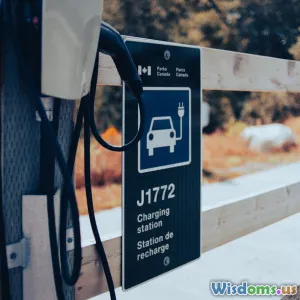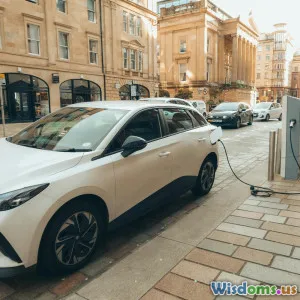
Navigating the Era of Sustainable Mobility
5 min read Explore the advancements and practices in sustainable mobility reshaping transportation for a greener future. (0 Reviews)
Navigating the Era of Sustainable Mobility
The world of transportation is undergoing a monumental shift as we enter the era of sustainable mobility. With climate change posing significant challenges, cities, governments, and industries are investing in innovative solutions that reduce environmental impacts while enhancing the quality of life. This article will explore the various facets of sustainable mobility, including electric vehicles (EVs), public transportation improvements, and the integration of smart technology.
The Need for Sustainable Mobility
Environmental Impact
Transportation is one of the largest contributors to greenhouse gas emissions. According to the U.S. Environmental Protection Agency, it accounts for nearly 29% of total emissions. As urbanization continues to rise, the demand for cleaner transportation options has become critical.
Social Equity
Sustainable mobility is not only about reducing emissions but also ensuring that all individuals have access to efficient transportation options. Many underserved communities rely heavily on public transport, and improving these systems can enhance their mobility.
Innovations in Transportation Technology
Electric Vehicles (EVs)
Electric vehicles are leading the charge in sustainable transportation. With advancements in battery technology, EVs are becoming more affordable and have longer ranges. Major automotive manufacturers are investing heavily in EV technology, with companies like Tesla, Ford, and Volkswagen pledging to transition to electric fleets by 2030.
- Example: Tesla's Model 3 has made electric cars more accessible, providing a practical option for everyday users.
Autonomous Vehicles
Self-driving technology holds great promise for reducing traffic congestion and improving safety. By optimizing traffic flows and reducing accidents caused by human error, autonomous vehicles can play a vital role in sustainable urban transport.
- Example: Waymo's autonomous taxi service in Phoenix, Arizona, showcases how this technology can function in real-world scenarios.
Public Transportation Improvements
Investments in public transit systems are crucial for sustainable mobility. Cities are focusing on expanding and modernizing bus and rail networks to make them more efficient and user-friendly.
- Example: Cities like Amsterdam and Copenhagen have successfully integrated cycling into their public transit systems, creating a cohesive and eco-friendly transportation network.
The Role of Smart Technology
Mobility as a Service (MaaS)
MaaS platforms are revolutionizing how people navigate urban environments by integrating various transportation modes into a single accessible service. Users can plan, book, and pay for multiple transport options through an app, promoting the use of public transit and reducing reliance on personal vehicles.
Data-Driven Solutions
Cities are leveraging big data and analytics to optimize transport systems, reduce congestion, and improve safety. By analyzing traffic patterns and user behavior, transportation authorities can make informed decisions on infrastructure investments and operational improvements.
Challenges to Overcome
While the advancements in sustainable mobility are promising, several challenges remain:
- Infrastructure: Upgrading existing infrastructure to support EV charging and smart technologies requires significant investment.
- Public Acceptance: Gaining public trust in new technologies, especially autonomous vehicles, is essential for widespread adoption.
- Policy and Regulations: Governments need to create supportive policies that encourage sustainable practices while addressing safety and equity concerns.
Conclusion
Navigating the era of sustainable mobility involves a multifaceted approach that includes technological innovation, improved public transportation, and smart city solutions. As we move forward, it is crucial for stakeholders—governments, businesses, and individuals—to collaborate and embrace these changes for a greener, more equitable future. By prioritizing sustainable practices, we can reshape our urban landscapes, reduce carbon emissions, and enhance the quality of life for all.
The journey towards sustainable mobility is not just a challenge; it is an opportunity to create a better world for future generations.
Rate the Post
User Reviews
Popular Posts



















